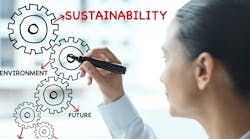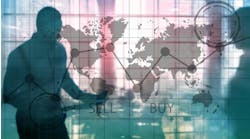Sustainability is a buzzword that’s thrown around a lot in the business world, where a growing number of companies are looking past bottom-line revenues and focusing on the good things they’re doing to preserve the environment and humankind as a whole. But sustainability can mean different things to different people—a point that can confuse even the most dedicated procurement department.
On its own, sustainability is about meeting the needs of the present without compromising the ability of future generations to meet their own needs. It also centers on improving the quality of human life while living within the carrying capacity of the earth’s supporting ecosystems. Finally, sustainability involves “stabilizing the currently disruptive relationship between earth’s two most complex systems—human culture and the living world.”
So how do these definitions apply to procurement, where individuals and teams are tasked with buying both the direct and indirect goods needed to run their organizations and serve their customers? TechTarget says sustainable procurement is “the meeting of business needs for materials, goods, utilities, and services in an environmentally-friendly, responsible, and ethical way. Companies dedicated to sustainable procurement try to make economical and effective long-term decisions that benefit the company, customers, society, and the environment.”
When making purchasing decisions, for example, a buyer who’s focused on sustainable procurement will look beyond initial product costs and also assess the cost of the total product lifecycle—from acquisition to maintenance to ultimate disposal. “Once these product considerations are met,” TechTarget notes, “a buyer would also avoid products produced by exploitative labor or environmentally-irresponsible producers and would favor fair trade companies.”
ISO 20400: 2017 Comes on the Scene
As the concept of sustainability has developed and evolved, procurement departments have found themselves at the center of many sustainability-focused conversations. With last year’s introduction of ISO 20400:2017, those conversations proliferated even further. This new standard provides guidelines for integrating sustainability into an organization’s procurement processes.
The standard defines the principles of sustainable procurement, including accountability, transparency, respect for human rights, and ethical behavior, and highlights key considerations such as risk management and priority setting. It also covers various stages of the procurement process, outlining the steps required to integrate social responsibility into the purchasing function.
The new standard defines processes that many companies are already using in the push to look beyond their bottom lines and pay closer attention to how their operations impact the world around them. “We are already beginning to see companies adjust their supply chain models and their supply chain communications in response to the uncertainties around globalization and trade,” BSR points out in its working paper, New Models for Sustainable Procurement.
For example, some U.S. car manufacturers have retracted foreign production and announced expansion plans for American production (in the wake of trade uncertainty). Major apparel companies are also investing in automation and working to develop manufacturing capacity closer to end customers. For instance, BSR reports that Nike is digitizing and vertically integrating its footwear supply chains, including deploying 1,200 new automated machines and near-shoring production in North America and in Asia.
4 Steps Down the Path to Sustainable Procurement
Part of the UK delegation that developed the standards, Action Sustainability’s Shaun McCarthy shares these sustainability tips with procurement professionals:
- Sustainable procurement is good procurement. In order to do sustainable procurement well you need to do procurement well. “If your organization’s procurement practices are rubbish, your sustainable procurement will be rubbish, too.”
- Call it what you want. Responsible sourcing, ethical procurement, responsible supply chain management, green buying…it all adds up to the same thing. “Call it whatever suits your organization’s culture.”
- Engage a wide range of people. “This is not just something your purchasing department does on Wednesdays…Your strategy needs to apply to anybody in your organization who participates in procurement decisions or works with suppliers.”
Develop a priority heat map. Not all of your categories of supply will contribute to all of your sustainability goals. “Develop a priority heat map to focus your category managers on the issues that are meaningful to their suppliers…How far down the supply chain you look will depend on where the impact will be most significant.” (Read all of McCarthy’s sustainable procurement tips here.)










